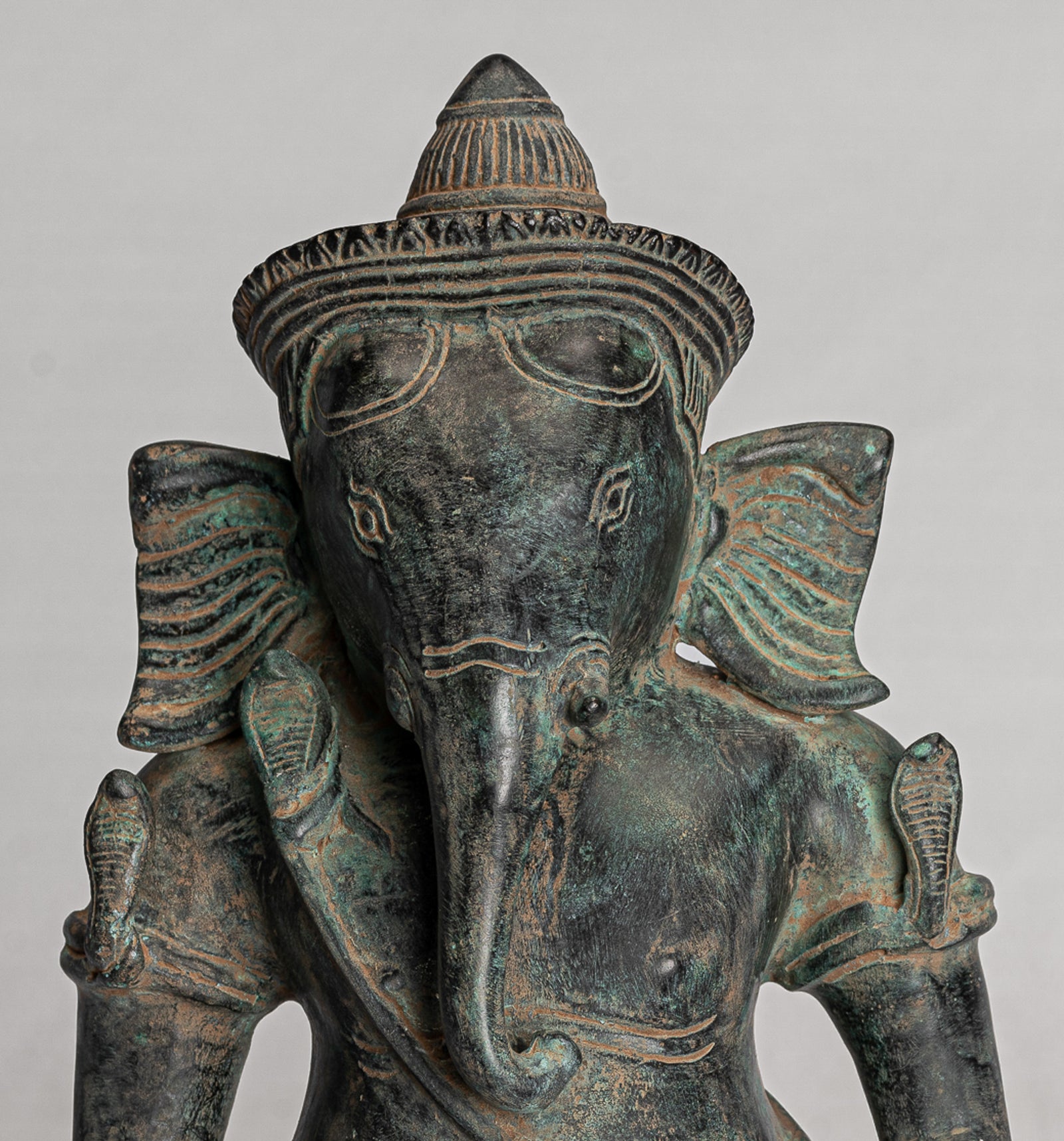
Perché ci sono così tante statue indù in Thailandia, un paese buddista?
La Thailandia, prevalentemente conosciuta come una nazione buddista Theravāda, ospita un numero sorprendente di statue e simboli indù. Questi includono statue di divinità indù come Shiva, Vishnu, Brahma e Ganesha mostrate in modo prominente in templi, spazi pubblici e santuari.
Questa affascinante coesistenza di elementi indù e buddisti riflette la ricca storia culturale e religiosa della Thailandia, radicata in secoli di interazione e sintesi tra le due tradizioni.
Contesto storico: l'arrivo dell'induismo nel sud -est asiatico
La presenza di statue indù in Thailandia può essere fatta risalire ai primi secoli d.C., quando commercianti, sacerdoti e studiosi indiani hanno portato l'induismo nel sud -est asiatico. Le pratiche e le credenze indù sono state abbracciate dai sovrani locali e fusi con tradizioni indigene, formando una cultura sincretica unica.
Durante il periodo di Dvaravati (secolo del XVI -11 ° d.C.) e l'Impero Khmer (IX-III secolo d.C.), l'induismo prosperava a fianco del buddismo. I sovrani di Khmer, che controllavano gran parte dell'attuale Thailandia, adottarono l'induismo come religione statale, costruendo templi dedicati agli dei indù. Questa eredità ha lasciato un segno indelebile sul panorama culturale thailandese.
Il ruolo delle divinità indù nel buddismo tailandese
Mentre il buddismo Theravāda alla fine divenne la religione dominante in Thailandia, le divinità indù non furono abbandonate. Invece, sono stati integrati nella cosmologia e nelle pratiche buddiste tailandesi. Questo sincretismo è evidente in diversi aspetti della cultura tailandese:
-
Brahma (Phra phrom): Brahma è uno degli dei indù più venerati in Thailandia. Il santuario di Erawan a Bangkok, dedicato a Brahma, è un famoso sito visitato sia da gente del posto che da turisti. I buddisti tailandesi spesso pregano Brahma per benedizioni, prosperità e protezione.
-
Ganesha (Phra Phikanet): Conosciuto come la rimozione degli ostacoli, Ganesha è ampiamente rispettato in Thailandia, in particolare tra artisti e studenti. Le statue di Ganesha possono essere trovate nei templi, nelle università e nelle istituzioni culturali.
-
Vishnu (Phra Narai): Vishnu è associato alla regalità e alla protezione in Thailandia. Il monarca tailandese è considerato un discendente di Vishnu e i simboli della divinità appaiono spesso in Regalia reali e cerimonie.
-
Shiva: Shiva, noto come cacciatorpediniere e rigeneratore, è meno importante ma è ancora adorato in contesti specifici, come nel santuario di Shiva a Bangkok.
L'influenza dell'induismo sull'arte e sull'architettura tailandese
L'influenza dell'induismo è evidente anche nell'arte e nell'architettura tailandese. Molti antichi templi, come Phanom Playg e Prasat Hin Phimai, furono originariamente costruiti come santuari indù dedicati a Shiva o Vishnu durante il periodo Khmer. Questi templi presentano intricate sculture e rilievi che raffigurano miti e divinità indù, che mostrano la profonda integrazione culturale dell'induismo nella società tailandese.
Nella moderna Tailandia, anche i templi buddisti includono spesso elementi ispirati agli indù, come le sculture di creature mitiche da epopee indù come il Ramayana (noto come il Ramakien in Thailandia). Lo stesso Ramakien, l'epopea nazionale della Thailandia, è un adattamento localizzato del Ramayana indù, dimostrando l'impatto culturale permanente dell'induismo.
Rituali e pratiche
I rituali buddisti tailandesi incorporano spesso elementi dell'induismo. Per esempio:
-
Sacerdoti Brahmin: I sacerdoti di Brahmin, che tracciano il loro lignaggio verso le tradizioni indiane, svolgono un ruolo vitale nelle cerimonie reali ed eventi di buon auspicio. Eseguono rituali ispirati agli indù per benedire nuovi edifici, consacrare le statue e celebrare le pietre miliari importanti.
-
Astrologia e divinazione: L'astrologia indù rimane influente nella cultura tailandese, guidando le decisioni su tutto, dalle date del matrimonio alle imprese.
-
Festival: Festival come Songkran (Capodanno tailandese) hanno radici nelle tradizioni indù, con cerimonie che onorano le divinità e cercano benedizioni per l'anno a venire.
Sincretismo: armonia tra le tradizioni
La coesistenza di statue indù e pratiche buddiste in Thailandia è una testimonianza dell'approccio sincretico della regione alla religione. Piuttosto che vedere l'induismo e il buddismo come reciprocamente esclusiva, la cultura tailandese ha armonizzato elementi di entrambe le tradizioni, creando un panorama spirituale che rispetti la diversità e la continuità.
Le divinità indù sono spesso considerate spiriti o protettori benevoli all'interno del buddismo tailandese. Questo approccio pragmatico e inclusivo consente la venerazione simultanea degli dei indù e degli insegnamenti buddisti, riflettendo l'adattabilità della spiritualità tailandese.
Conclusione
La presenza di statue indù in Thailandia evidenzia le ricche interazioni storiche del paese con l'India e la sua capacità di integrare diverse tradizioni in un'identità culturale coesa.
Queste statue servono da promemoria di un patrimonio condiviso, colmando oltre e presente e mettendo in mostra l'influenza duratura dell'induismo all'interno di una nazione prevalentemente buddista.
Comprendendo questa sintesi unica, otteniamo un apprezzamento più profondo per la complessità spirituale e culturale della Thailandia.
























